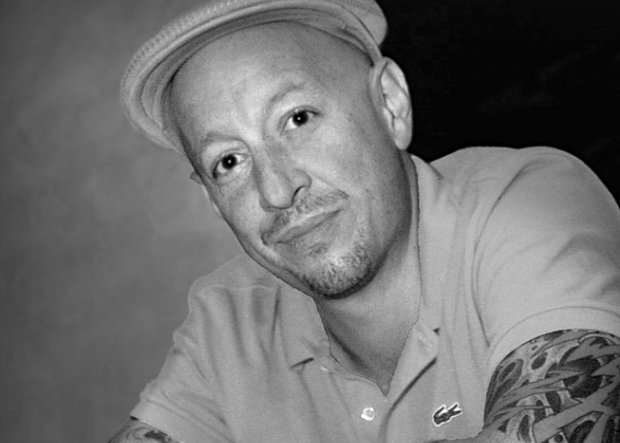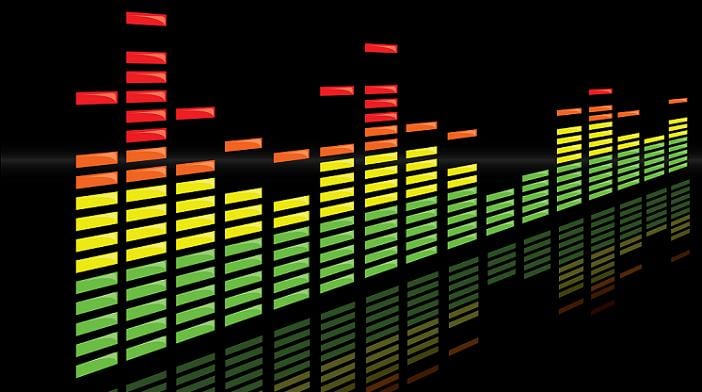 Daniel Wyatt. (Image via splice.com)
Daniel Wyatt. (Image via splice.com)
A version of this article originally appeared on Splice.
Drums help to form the foundation of many songs, and if you get them sounding good in a mix, you’re on your way to a great recording. Working with a live drum kit is very different than working with drum samples when it comes to mixing. In this guest post, Daniel Wyatt shows us his go-to tricks for getting live drums to sound great. To follow along with his process, sign up for a free Splice account, and download the project below:
Before I dive into giving you some tips, I'd like to point out a significant difference between live drums and programmed drums. With better drum samplers out there, I find myself finding engineers who don't know how to handle live drums in a mix. Programmed drums are usually already EQ'd, compressed, limited, saturated, and ready to go, and to get them to relate to each other in an impactful way in a mix is no small task.
However, there's one main difference between the two, and that is bleed. When live drums are recorded, multiple microphones not only pick up the part of the drum that they're pointed at, but also other instruments in the drum kit. For example, there's cymbal bleed in the kick drum, kick drum bleed in the snare drum, snare drum bleed in the hi-hat, etc. Bleed cannot be eliminated, but it can be tamed and controlled with the right tools. Mixing live drums is all about embracing the bleed and making the right moves with the necessary tools that we have available to us. Let's look at some best practices.
1. Noise gates
A noise gate is dynamics processor that helps to control the volume of an audio signal. Unlike a compressor that reacts to a signal when it goes above the threshold, a noise gate reacts to a signal when it goes below the threshold. A gate is used on drum elements like kicks and snares to separate them from other drum bleed to achieve a cleaner sound and better control as a mixer.
Gates are relatively simple to operate. Getting the recording to sound good requires playing with the attack and release, as well as with the threshold and the hold timing. You'll need to play around with the values of the controls to capture as much of the "meat" of the sound with the least amount of artifacts as possible. The end result is rarely perfect, but almost always an improvement.
2. Phase correction and reductive EQ
When the same instrument, such as the kick drum, is being mic'd by two different microphones – one on the outside for thump, and another inside for the attack – a phase issue may arise. An experienced tracking engineer will be able to correct this problem during the recording by either reversing the phase or moving the microphones. As a mixer, the simplest way to see if your phase relationship is correct is to solo the two tracks in question and flip a phase switch on and off – whichever setting sounds better is better!
In addition, the use of reductive EQ is a very important technique to allow the various elements to fit together. It's really a question of what you feel is important or superfluous on a given track. For example, you'll most likely have kick drum bleed on your overhead mics. By using a high-pass filter, you can create space for the kick drum by eliminating the low frequencies in the overhead tracks.
3. Individual element compression/de-essing
Light compression can maintain the integrity of the organic drums – while still tightening them up a bit. Moderate thresholds, light ratios, and medium releases tend to help "contain" and create a natural sound without choking the drums. Furthermore, it's critical that the engineer employs various de-essers while assembling the live drum mix. A de-esser is a frequency-sensitive compressor that's usually "tuned" to duck harsh frequencies that are around 2 kHz to 14 kHz. Typical elements that need de-essing would be hi-hats, overheads, and intentionally over-compressed drum tracks.
4. Drum bus compression/parallel (New York style) compression
While compression can be used to smooth out the dynamics of individual elements, compression can also be used to "glue" a number of elements together. Drum bus compression is a common practice, especially in rock mixing, to make your drums sound tight and punchy. One useful trick when it comes to drum bus compression is to filter out the low end of the internal side-chain of the drum bus compressor. The purpose of this move is to "hide" the low frequency content from the compressor's detector. In this way, the kick does not trigger the compressor but allows you to compress the mid-range and high frequencies of the drum kit, while retaining a dynamic low end.
Finally, there's one last drum mixing technique that yields excellent results. Parallel compression is the technique of over-compressing a signal and then blending the it with the uncompressed signal. The result gives you the best of both worlds – the details of the over-compressed signal with the punch from the uncompressed signal. There are many ways to go about using parallel compression, ranging from creating two distinct buses and blending them to simply using a wet/dry knob on a compressor. In this practice session, I took a mono room mic track and over-compressed it, and then blended it in with the moderately compressed drum bus. The results adds life, natural reverb, and bite to the overall drum sound. Although, technically speaking, this isn't parallel compression, it generates a similar result.
In conclusion, while there are various time-tested techniques and tips for mixing live drums, the starting place mentally is that it's more like making a stew than making a sandwich. Changing one element instantly affects that sound of another. Once you start to enjoy this sort of puzzle, the real fun and creativity begins.
Check out even more mastering and mixing tips from Daniel Wyatt!
Daniel Wyatt has been an audio engineer and educator for 30 years. He's taught mixing and mastering at both SAE New York and Dubspot for over ten years. Check out his website and follow him on Twitter @mixmasterwyatt.







